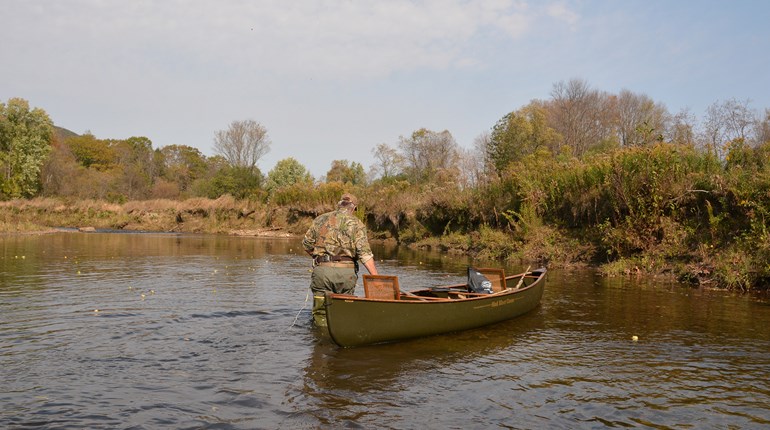
Bowhunters who feel the itch to put down their shotgun and try their hand at arrowing a big gobbler need to adjust their tactics—that's no secret.
The game now becomes almost completely about the set-up as opposed to a stick and move game (though there are a few exceptions; see below.) With that in mind, here are some suggestions that will get you ahead of the curve.
Bows & Arrows
Equipment: I shoot essentially the same bow & arrow set-up that I do for whitetails, the exception being that I may turn my draw weight down about 10 percent to make it easier to draw the bow with minimal movement and hold the bow at full draw for an extended period of time. Broadheads with oversized cutting diameters—think expandables—are also a good choice.
Shooting: Odds are you’ll be shooting from your knees or seated inside a blind when hunting. Practice shooting this way.
Aiming: There are two really good places to hit a gobbler with a broadhead. The first is when the turkey is broadside, aim for the wing butt, which will both break the wing and take out the heart/lung area. If he’s facing away from you, aim for the base of the tail, which will break the spine.
Shot Distance: A turkey has a rather tiny “X-Ring;” if you miss it, you’ll probably lose the bird. For that reason I don't recommend taking shots over 30 yards. I try and set up so the shot will be within a 15-25 yard range.
Blinds & Decoys
Naturally, you cannot kill a gobbler unless there’s one in the area. That’s where your scouting and knowledge of the lay of the land come into play. And once you locate the right spot, absolutely, positively the best way to get a controlled bow shot at a gobbler is by combining a blind with the right decoy set-up. Today’s pop-up blinds designed for bowhunting are ideal, and you don't have to worry about setting them up weeks ahead of time as you do for big game. Placing a life-sized strutter decoy out front with a real turkey fan in place of the fake one that comes with the deke makes a huge difference. Adding a couple of hen decoys completes the set-up. I place the decoy 15 yards from the blind so that when a gobbler comes in and stops 5-10 yards away to strut he is still inside my own range. You can also build a brush blind, but remember that you have to be able to draw the bow without being seen.
The best place to set up this deadly combination is along a field edge where you know hens have been coming to feed and gobblers have been coming to strut. This allows you to tuck back into the brush line and place the decoy in a spot where it can be seen for a long distance. In timbered areas, setting up on dirt roads can accomplish the same thing.
The Secret Weapon
If you are hunting with a buddy, try this trick. For many years a good friend, Ken Byers, has been making large fans from real tail feathers and attaching them to a stick. He and a buddy then hunt turkeys the same way he does with a shotgun, using the stick and move style to locate birds. They then get as close as they can, using natural depressions in the terrain like a ditch, small hill or downed logs for cover, and set up. One man calls and raises the fan so the gobbler can see it, then gently turns it from side to side to emulate a strutting bird. The shooter is set up right next to the fanner, and when the gobbler comes in he simply draws the bow and shoots him. It sounds like a gimmick but believe me when I tell you this technique can be pure poison.




































